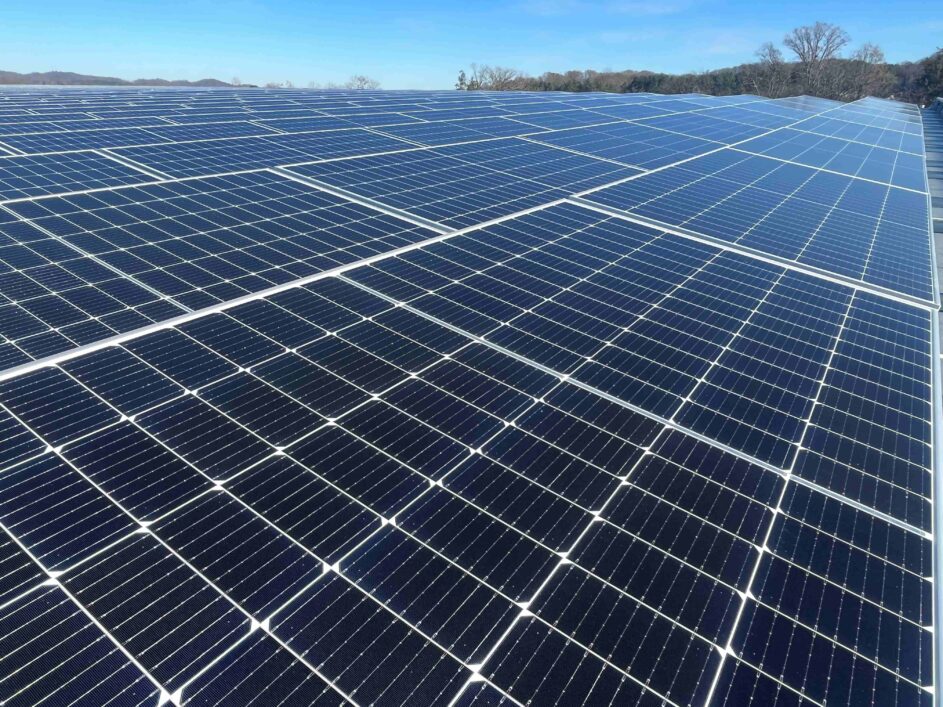Let’s get down to basics on how solar energy works. Then we can explore in more detail how solar is becoming a lowest-cost alternative for people and businesses to meet their electricity needs.
Solar photovoltaic (PV) technology converts sunlight to electricity, using this free renewable resource to create an environmentally friendly source of energy. Sunlight provides energy to solar cells where a special crystal structure involving layers of silicon conducts electrons.
Several of these small cells are built together in a solar module (often colloquially referred to as solar panels), that are installed together in a solar PV system, array or installation.
Exposed to sunlight, the PV cell absorbs that light, then transfers the energy to negatively charged electron particles. Tiny metal contacts that form lines throughout a solar cell move the current through the module.
Most often, modules are then connected in series, and then combined to bring power generated at the collection of modules to an inverter. There, the direct current (DC) gets converted to alternating current (AC) as is used by the electric grid to service your home or business.
Improvements over the years mean solar modules are now more productive and powerful.
They’re manufactured to collect sunlight and convert it more efficiently, producing more energy per square foot. Modules today also meet established standards for durability and performance, for example impact resistance standards mean fewer damaged panels during extreme weather conditions like storms with hail.
Do solar modules constantly create energy from the sun?
When the sun is shining, of course. But not at night. Even in daytime, factors such as shade from nearby trees or adjacent rooftops, plus cloud cover can affect the amount of solar energy being absorbed.
System efficiency can be dependent on varying weather conditions, and performance can vary in different regions. Some solar installations include battery storage for times when the system creates more electricity than can be instantly used. That stored electricity can help with offsetting overnight energy needs or times when the weather is not ideal.
An important detail to understand when adding a solar array is the permitting and interconnection process. This is essential to ensure the system function is properly understood by the system owner and the local utility. Most solar PV system owners cover a portion of their own energy usage with solar, while also paying for a portion of their electricity from the grid to the local utility.
Anne Brock is marketing coordinator for Solar Alliance. She can be reached at: 865-221-8349 or abrock@solaralliance.com

